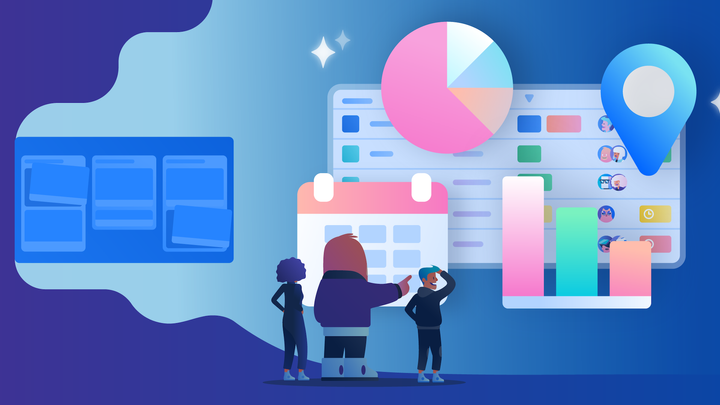



Followers
1
Category
Business
Tag
Software
Trello is a web-based, Kanban-style, list-making application and is developed by Trello Enterprise, a subsidiary of Atlassian. Created in 2011 by Fog Creek Software (now Glitch), it was spun out to form the basis of a separate company in New York City in 2014 and sold to Atlassian in January 2017.
Resource: Wikipedia
Microsoft Teams
Microsoft Teams is a proprietary business communication platform developed by Microsoft, as part of the Microsoft 365 family of products. Teams primarily competes with the similar service Slack, offer
Microsoft To Do
Microsoft To Do (previously styled as Microsoft To-Do) is a cloud-based task management application. It allows users to manage their tasks from a smartphone, tablet and computer. The technology is pro
Git
Git is a distributed version control system designed to manage and track changes to files. It is commonly used by software developers working collaboratively to manage source code efficiently. Gi
Pro WhatsApp Tips | Smart, Simple, and Secure Messaging
Adobe Character Animator
Adobe Character Animator is an Emmy Award-winning desktop application software product that combines live motion-capture with a multi-track recording system to control layered 2D puppets drawn in Phot
Zoom
Zoom Meetings (commonly shortened to Zoom, and stylized as zoom) is a proprietary video teleconferencing software program developed by Zoom Video Communications. The free plan allows up to 100 concurr
LinkedIn is an American business and employment-oriented online service that operates via websites and mobile apps. Launched on May 5, 2003, the platform is primarily used for professional networking
PlayStation App
The PlayStation App is a software application for iOS and Android devices developed by PlayStation Mobile Inc. The application allows users to: See which friends are online and what they're
Microsoft Excel
Microsoft Excel is a spreadsheet developed by Microsoft for Windows, macOS, Android and iOS. It features calculation, graphing tools, pivot tables, and a macro programming language called Visual Basic
Xcode
Xcode is Apple's integrated development environment (IDE) for macOS, used to develop software for macOS, iOS, iPadOS, watchOS, and tvOS. It was first released in 2003; the latest stable release is ver
Apple Maps
Apple Maps is a web mapping service developed by Apple Inc. It is the default map system of iOS, iPadOS, macOS, and watchOS, use by non-Apple Inc. devices results in a redirect to Google Maps, but Duc
Adobe XD
Adobe XD (also known as Adobe Experience Design) is a vector-based user experience design tool for web apps and mobile apps, developed and published by Adobe Inc. It is available for macOS and Windows
Visual Studio Code
Visual Studio Code is a source-code editor made by Microsoft for Windows, Linux and macOS. Features include support for debugging, syntax highlighting, intelligent code completion, snippets, code refa
Android Studio
Android Studio is the official integrated development environment (IDE) for Google's Android operating system, built on JetBrains' IntelliJ IDEA software and designed specifically for Android developm
Microsoft OneDrive
Microsoft OneDrive (previously known as SkyDrive) is a file hosting service and synchronization service operated by Microsoft as part of its web version of Office. First launched in August 2007, OneDr
Dropbox
Dropbox is a file hosting service operated by the American company Dropbox, Inc., headquartered in San Francisco, California, that offers cloud storage, file synchronization, personal cloud, and clien
Google Drive
Google Drive is a file storage and synchronization service developed by Google. Launched on April 24, 2012, Google Drive allows users to store files in the cloud (on Google's servers), synchronize fil